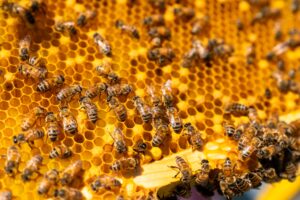Following a healthy diet rich in fruits and veggies and low in fats and added sugars is a sure way to dodge ailments. It can even increase your lifespan.
A healthy diet is particularly important for kids, who are at risk of developing a myriad of diseases as adults if they follow poor eating habits.
The Healthy Food and Drink Policy was introduced in schools across WA in 2007. It established a guideline for what types of foods school canteens were allowed to sell.
In essence, the policy banned any food products high in fat and added sugars. Canteen menus should contain 60% ‘green’ options, like fresh fruit, vegetables and dairy products or cereals with no added sugar.

The remainder 40% of the canteen menu should include ‘amber’ options: low-fat processed meats, cakes and muffins, among others. You can check out the complete list of products for each category here.
Now a new study has evaluated the success of this policy by surveying a total of 307 school representatives. This included school principals, teachers, canteen managers, parents and citizens’ committee presidents.

“85% of respondents believed that the foods offered to school children were healthier...”
“This study found that 85% of respondents believed that the foods offered to school children were healthier after the introduction of the traffic light food policy for canteens,” said lead author Simone Pettigrew from the School of Psychology at Curtin University in a press release, “while 90% felt it offered a valuable opportunity to teach children about healthy eating.”
So … are kids eating more healthily?
Maybe. If they can afford it. A 2016 study analysed canteen menu prices for ‘green’ and ‘amber’ food options across 70 schools in NSW. The study found that healthier options were often more expensive than less healthy options.
For example, ‘green’ hot food items were, on average, 50¢ more expensive than unhealthy hot food items from the ‘red’ category. Such ‘red’ food items are not available in canteens under the WA Healthy Food and Drink Policy. However, the price difference may encourage kids or parents to buy the cheaper option elsewhere.
“It doesn’t sound like very much, but we know kids are highly motivated by taste and price,” said lead author Rebecca Wyse at the University of Newcastle’s School of Medicine and Public Health. “When they have a limited amount to spend at the canteen, price matters,” she said in a news report.
Keep in mind, though, that the situation in WA could be different to NSW. Research addressing this in WA schools is needed.
Another issue affecting kids’ food choices has nothing to do with canteen prices.
The power of TV
Kids today are exposed to more than 800 junk food ads every year, a 2016 study found.

For this study, researchers designed a custom-made TV monitoring system. This allowed them to record all ads placed during 2016 in one South Australian free-to-air network.
The results showed that nearly 100,000 food advertisements were placed throughout 2016. Most of these ads involved snack foods, crumbed or battered meats, fast food and sugary drinks.
During children’s peak viewing times, researchers counted 800 junk food ads. This was more than twice the number of healthy food ads placed during the same time period.
According to the World Health Organization, food marketing heavily influences the types of foods that children prefer to eat.
The study findings point to the need to regulate what kids are watching on TV. This would help battle obesity and other health problems related to poor eating habits.
“Australian health, nutrition and policy experts agree that reducing children’s exposure to junk food ads is an important part of tackling obesity, and there is broad public support for stronger regulation of advertising to protect children,” said lead author Lisa Smithers from the University of Adelaide in a press release.
Further research addressing local food advertising and canteen prices is needed to assess the situation in WA. “In the meantime, the progress being made in school canteens shows that it is possible to make a positive difference to children’s diets by modifying their environments,” said Simone. “It remains to be seen if similar policies can be introduced to reduce children’s exposure to large amounts of junk food advertising that influence their perceptions of a ‘normal’ diet.”









